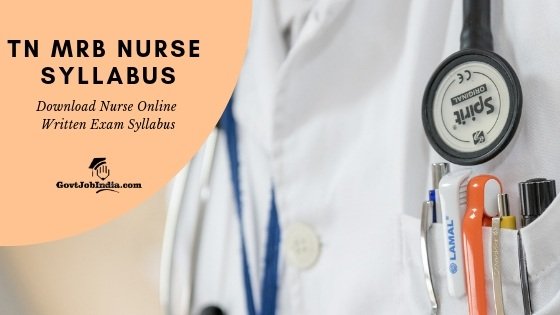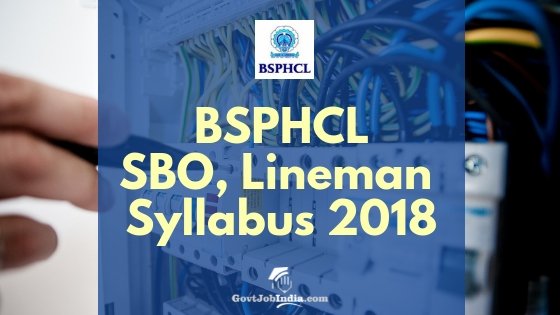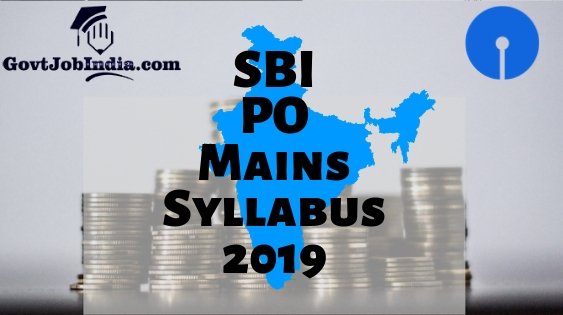TSNPDCL Assistant Engineer Recruitment 2018 Entrance Exam Paper PatternThe exact structure of the paper pattern is described in the table provided below. Candidates are urged to take a glance at it for an idea as to how the marking scheme will be for TSNPDCL Assistant Engineer Entrance exam. Exam Paper Pattern| Sr. No. | Name of Tests | No. of Qs | Max. Marks | Time allotted | | 1 | Part A | 80 | 80 | | | 2 | Part B | 20 | 20 | | | | Total | 100 | 100 | 120 minutes |
TSNPDCL Assistant Engineer Entrance Syllabus 2018Candidates are reminded that attaining a high enough written examination score is the only way they will be selected for allotment. So we have provided a detailed list of all the subject and topics which will be of prominence in the TSNPDCL Assistant Engineer Entrance 2018. Please go through the TSNPDCL Entrance Exam syllabus provided below. Keep in mind that there are only 68 posts up for grabs. Do not gloss over a single topic in the list given below as we greatly desire that you are selected for the job. PART ASection-A: 80 MarksElectrical Engineering Engineering MathematicsLinear Algebra: - Matrix Algebra, Systems of linear equations,
- Eigenvalues, Eigenvectors.
Calculus: - Mean value theorems, Theorems of integral calculus,
- Evaluation of definite and improper integrals, Partial Derivatives,
- Maxima and minima, Multiple integrals, Fourier series, Vector
- Identities, Directional derivatives, Line integral, Surface integral,
- Volume integral, Stokes’s theorem, Gauss’s theorem, Green’s theorem.
Differential equations: - First order equations (linear and nonlinear),
- Higher order linear differential equations with constant coefficients,
- Method of variation of parameters, Cauchy’s equation, Euler’s
- equation, Initial and boundary value problems, Partial Differential Equations,
- Method of separation of variables.
Complex variables: - Analytic functions, Cauchy’s integral
- theorem, Cauchy’s integral formula, Taylor series, Laurent series, Residue
- theorem, Solution integrals.
Probability and Statistics: - Sampling theorems, Conditional
- probability, Mean, Median, Mode, Standard Deviation, Random
- variables, Discrete and Continuous distributions, Poisson
- distribution, Normal distribution, Binomial distribution, Correlation
- analysis, Regression analysis.
Numerical Methods: - Solutions of nonlinear algebraic equations,
- Single and Multi‐step methods for differential equations.
- Transform Theory: Fourier Transform, Laplace Transform, z‐Transform.
b) Electric Circuits - Network graph, KCL, KVL, Node and Mesh analysis, Transient response of
- dc and ac networks, Sinusoidal steady‐state analysis, Resonance, Passive
- filters, Ideal current and voltage sources, Thevenin’s theorem, Norton’s
- theorem, Superposition theorem, Maximum power transfer theorem,
- Two‐port networks, Three phase circuits, Power and power factor in ac
- circuits.
c) Electromagnetic Fields - Coulomb’s Law, Electric Field Intensity, Electric Flux Density, Gauss’s Law,
- Divergence, Electric field and potential due to point, line, plane and
- spherical charge distributions, Effect of dielectric medium, Capacitance of
- simple configurations, Biot‐Savart’s law, Ampere’s law, Curl, Faraday’s law,
- Lorentz force, Inductance, Magnetomotive force, Reluctance, Magnetic
- circuits,Self and Mutual inductance of simple configurations.
d) Signals and Systems - Representation of continuous and discrete‐time signals, Shifting and scaling
- operations, Linear Time Invariant and Causal systems, Fourier series
- representation of continuous periodic signals, Sampling theorem,
- Applications of Fourier Transform, Laplace Transform and z-Transform.
e) Electrical Machines - Single phase transformer: equivalent circuit, phasor diagram, open circuit
- and short circuit tests, regulation and efficiency; Three phase transformers:
- connections, parallel operation; Auto‐transformer, Electromechanical
- energy conversion principles, DC machines: separately excited, series and
- shunt, motoring and generating mode of operation and their
- characteristics, starting and speed control of dc motors; Three phase
- induction motors: principle of operation, types, performance, torque-speed
- characteristics, no-load and blocked rotor tests, equivalent circuit, starting
- and speed control; Operating principle of single phase induction motors;
f) Synchronous machines: - cylindrical and salient pole machines, performance,
- regulation and parallel operation of generators, starting of synchronous
- motor, characteristics; Types of losses and efficiency calculations of electric
- machines.
f) Power Systems - Power generation concepts, ac and dc transmission concepts, Models and
- performance of transmission lines and cables, Series and shunt
- compensation, Electric field distribution and insulators, Distribution
- systems, Per‐unit quantities, Bus admittance matrix, Gauss- Seidel and
- Newton-Raphson load flow methods, Voltage and Frequency control,
- Power factor correction, Symmetrical components, Symmetrical and
- unsymmetrical fault analysis, Principles of over‐current, differential and
- distance protection; Circuit breakers, System stability concepts, Equal area
- criterion.
g) Control Systems - Mathematical modeling and representation of systems, Feedback principle,
- transfer function, Block diagrams and Signal flow graphs, Transient and
- Steady‐state analysis of linear time invariant systems, Routh-Hurwitz and
- Nyquist criteria, Bode plots, Root loci, Stability analysis, Lag, Lead and
- Lead‐Lag compensators; P, PI and PID controllers; State space model, State
- transition matrix.
h) Electrical and Electronic Measurements - Bridges and Potentiometers, Measurement of voltage, current, power,
- energy and power factor; Instrument transformers, Digital voltmeters and
- multimeters, Phase, Time and Frequency measurement; Oscilloscopes,
- Error analysis.
i) Analog and Digital Electronics - Characteristics of diodes, BJT, MOSFET; Simple diode circuits: clipping,
- clamping, rectifiers; Amplifiers: Biasing, Equivalent circuit and Frequency
- response; Oscillators and Feedback amplifiers; Operational amplifiers:
- Characteristics and applications; Simple active filters, VCOs and Timers,
- Combinational and Sequential logic circuits, Multiplexer, Demultiplexer,
- Schmitt trigger, Sample and hold circuits, A/D and D/A converters,
- 8085Microprocessor: Architecture, Programming and Interfacing.
j) Power Electronics - Characteristics of semiconductor power devices: Diode, Thyristor, Triac,
- GTO, MOSFET, IGBT; DC to DC conversion: Buck, Boost and Buck-Boost
- converters; Single and three phase configuration of uncontrolled rectifiers,
- Line commutated thyristor based converters, Bidirectional ac to dc voltage
- source converters, Issues of line current harmonics, Power factor,
- Distortion factor of ac to dc converters, Single phase and three phase
- inverters, Sinusoidal pulse width modulation.
|
Part BGeneral Awareness and Numerical Ability : - i) Analytical & Numerical Ability
- ii) General Awareness
iii) English - iv) Related to Telangana Culture & Movement
- v) Computer Knowledge.
The syllabus for Assistant Engineers (Civil) is very much similar to the syllabus of their electrical counterparts. However there are a few minor differences. Candidates who wish to apply for the civil engineering post can find their syllabus enlisted below. Civil EngineeringSection AEngineering MathematicsLinear Algebra: - Matrix algebra; Systems of linear equations; Eigen values and
- Eigen vectors.
Calculus: - Functions of single variable; Limit, continuity and differentiability;
- Mean value theorems, local maxima and minima, Taylor and Maclaurin
- series; Evaluation of definite and indefinite integrals, application of definite
- integral to obtain area and volume; Partial derivatives; Total derivative;
- Gradient, Divergence and Curl, Vector identities, Directional derivatives, Line,
- Surface and Volume integrals, Stokes, Gauss and Green s theorems
Ordinary Differential Equation (ODE): - First order (linear and non-linear)
- equations; higher order linear equations with constant coefficients; Euler-
- Cauchy equations; Laplace transform and its application in solving linear
- ODEs; initial and boundary value problems.
Partial Differential Equation (PDE): - Fourier series; separation of variables;
- solutions of one- dimensional diffusion equation; first and second order onedimensional
- wave equation and two-dimensional Laplace equation.
Probability and Statistics: - Definitions of probability and sampling theorems;
- Conditional probability; Discrete Random variables: Poisson and Binomial
- distributions; Continuous random variables: normal and exponential
- distributions; Descriptive statistics – Mean, median, mode and standard
- deviation; Hypothesis testing.
Numerical Methods: - Accuracy and precision; error analysis. Numerical
- solutions of linear and non-linear algebraic equations; Least square
- approximation, Newton s and Lagrange polynomials, numerical
- differentiation, Integration by trapezoidal and Simpson s rule, single and
- multi-step methods for first order differential equations.
CIVIL EngineeringStructural EngineeringEngineering Mechanics: - System of forces, free-body diagrams, equilibrium
- equations; Internal forces in structures; Friction and its applications;
- Kinematics of point mass and rigid body; Centre of mass; Euler s equations of
- motion; Impulse-momentum; Energy methods; Principles of virtual work.
Solid Mechanics: - Bending moment and shear force in statically determinate
- beams; Simple stress and strain relationships; Theories of failures; Simple
- bending theory, flexural and shear stresses, shear centre; Uniform torsion,
- buckling of column, combined and direct bending stresses.
Structural Analysis: - Statically determinate and indeterminate structures by
- force/ energy methods; Method of superposition; Analysis of trusses, arches,
- beams, cables and frames; Displacement methods: Slope deflection and
- moment distribution methods; Influence lines; Stiffness and flexibility
- methods of structural analysis.
Construction Materials and Management: - Construction Materials: Structural
- steel – composition, material properties and behaviour; Concrete –
- constituents, mix design, short-term and long-term properties; Bricks and
- mortar; Timber; Bitumen. Construction Management: Types of construction
- projects; Tendering and construction contracts; Rate analysis and standard
- specifications; Cost estimation; Project planning and network analysis – PERT
- and CPM.
Concrete Structures: - Working stress, Limit state and Ultimate load design
- concepts; Design of beams, slabs, columns; Bond and development length;
- Prestressed concrete; Analysis of beam sections at transfer and service loads.
- Steel Structures: Working stress and Limit state design concepts; Design of
- tension and compression members, beams and beam- columns, column
- bases; Connections – simple and eccentric, beam-column connections, plate
- girders and trusses; Plastic analysis of beams and frames
Geotechnical EngineeringSoil Mechanics: - Origin of soils, soil structure and fabric; Three-phase system
- and phase relationships, index properties; Unified and Indian standard soil
- classification system; Permeability – one dimensional flow, Darcy s law;
- Seepage through soils – two-dimensional flow, flow nets, uplift pressure,
- piping; Principle of effective stress, capillarity, seepage force and quicksand
- condition; Compaction in laboratory and field conditions; One- dimensional
- consolidation, time rate of consolidation; Mohr s circle, stress paths,
- effective and total shear strength parameters, characteristics of clays and sand.
Foundation Engineering: - Sub-surface investigations – scope, drilling bore
- holes, sampling, plate load test, standard penetration and cone penetration
- tests; Earth pressure theories – Rankine and Coulomb; Stability of slopes –
- finite and infinite slopes, method of slices and Bishop s method; Stress
- distribution in soils – Boussinesq s and Westergaard s theories, pressure
- bulbs; Shallow foundations – Terzaghi s and Meyerhoff s bearing capacity
- theories, effect of water table; Combined footing and raft foundation;
- Contact pressure; Settlement analysis in sands and clays; Deep foundations –
- types of piles, dynamic and static formulae, load capacity of piles in sands
- and clays, pile load test, negative skin friction.
Water Resources EngineeringFluid Mechanics: - Properties of fluids, fluid statics; Continuity, momentum,
- energy and corresponding equations; Potential flow, applications of
- momentum and energy equations; Laminar and turbulent flow; Flow in pipes,
- pipe networks; Concept of boundary layer and its growth.
Hydraulics: - Forces on immersed bodies; Flow measurement in channels and
- pipes; Dimensional analysis and hydraulic similitude; Kinematics of flow,
- velocity triangles; Basics of hydraulic machines, specific speed of pumps and
- turbines; Channel Hydraulics – Energy-depth relationships, specific energy,
- critical flow, slope profile, hydraulic jump, uniform flow and gradually varied flow
Hydrology: - Hydrologic cycle, precipitation, evaporation, evapo-transpiration,
- watershed, infiltration, unit hydrographs, hydrograph analysis, flood
- estimation and routing, reservoir capacity, reservoir and channel routing,
- surface run-off models, ground water hydrology – steady state well hydraulics
- and aquifers; Application of Darcy s law.
Irrigation: - Duty, delta, estimation of evapo-transpiration; Crop water
- requirements; Design of lined and unlined canals, head works, gravity dams
- and spillways; Design of weirs on permeable foundation; Types of irrigation
- systems, irrigation methods; Water logging and drainage; Canal regulatory
- works, cross-drainage structures, outlets and escapes.
Environmental EngineeringWater and Waste Water: - Quality standards, basic unit processes and
- operations for water treatment. Drinking water standards, water
- requirements, basic unit operations and unit processes for surface water
- treatment, distribution of water. Sewage and sewerage treatment, quantity
- and characteristics of wastewater. Primary, secondary and tertiary treatment
- of wastewater, effluent discharge standards. Domestic wastewater
- treatment, quantity of characteristics of domestic wastewater, primary and
- secondary treatment. Unit operations and unit processes of domestic
- wastewater, sludge disposal.
Air Pollution: - Types of pollutants, their sources and impacts, air pollution
- meteorology, air pollution control, air quality standards and limits.
Municipal Solid Wastes: - Characteristics, generation, collection and
- transportation of solid wastes, engineered systems for solid waste
- management (reuse/ recycle, energy recovery, treatment and disposal).
Noise Pollution: - Impacts of noise, permissible limits of noise pollution,
- measurement of noise and control of noise pollution.
Transportation Engineering - Transportation Infrastructure: Highway alignment and engineering surveys;
- Geometric design of highways – cross-sectional elements, sight distances,
- horizontal and vertical alignments; Geometric design of railway track; Airport
- runway length, taxiway and exit taxiway design.
- Highway Pavements: Highway materials – desirable properties and quality
- control tests; Design of bituminous paving mixes; Design factors for flexible
- and rigid pavements; Design of flexible pavement using IRC: 37-2012; Design
- of rigid pavements using IRC: 58-2011; Distresses in concrete pavements.
- Traffic Engineering: Traffic studies on flow, speed, travel time – delay and O-D
- study, PCU, peak hour factor, parking study, accident study and analysis,
- statistical analysis of traffic data; Microscopic and macroscopic parameters of
- traffic flow, fundamental relationships; Control devices, signal design by
- Webster s method; Types of intersections and channelization; Highway
- capacity and level of service of rural highways and urban roads.
Geomatics EngineeringPrinciples of surveying; - Errors and their adjustment; Maps – scale, coordinate
- system; Distance and angle measurement – Levelling and trigonometric
- levelling; Traversing and triangulation survey; Total station; Horizontal and
- vertical curves.
Photogrammetry – - scale, flying height; Remote sensing – basics, platform and
- sensors, visual image interpretation; Basics of Geographical information
- system (GIS) and Geographical Positioning system (GPS).
Section-B:.General Awareness and Numerical Ability: i) Analytical & Numerical Ability ii) General Awareness iii) English iv) Related to Telangana Culture & Movement v) Computer Knowledge. |
|
 Candidates seeking a job in TSNPDCL as an Assistant Engineer would know that the TSNPDCL Assistant Engineer Recruitment has started and the last date for application have passed on. Hopefully you have successfully completed the application process and are in line to write your entrance exam. We at GovtJobIndia.com present to you the TSNPDCL Assistant Engineer Entrance Exam Syllabus for 2018.
Candidates seeking a job in TSNPDCL as an Assistant Engineer would know that the TSNPDCL Assistant Engineer Recruitment has started and the last date for application have passed on. Hopefully you have successfully completed the application process and are in line to write your entrance exam. We at GovtJobIndia.com present to you the TSNPDCL Assistant Engineer Entrance Exam Syllabus for 2018. CENTRES FOR THE WRITTEN EXAMINATION:
CENTRES FOR THE WRITTEN EXAMINATION:
 CENTRES FOR THE WRITTEN EXAMINATION:
CENTRES FOR THE WRITTEN EXAMINATION:




